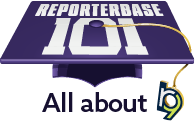Lesson #49
Receivables – Enter Other Transactions function
Financial transactions do not always entail client payments for invoices. Use this function to deal with bounced checks, incorrect invoice charges, misapplied payments, duplicate payments, refunds, miscellaneous income, and uncollectible bad debts.
Enter these types of non-cash transactions into RB to keep your RB ledger accurate. Balance the transactions and post them.
‘Other Transactions’ in RB include:
- Credit Memos
- Debit Memos
- Duplicate Payments
- Refunds
- Miscellaneous Receipts
- Voids
- Write-offs
Credit Memos
Use a credit memo to reduce the balance of an invoice — for example when a client returns a product or was charged for a service they didn’t ask for. A credit memo can be for the full amount or part of the amount of an invoice. If a commission was earned on the sale you can choose to decrease the sale rep’s/Client Of resource’s commission or honor it.
Debit Memos
If a client bounces a check or you applied a payment to the wrong invoice, use a debit memo to increase the invoice balance. You can use the entire balance — including late charges and finance charges — in a debit memo. You can also credit any commissions back to the related sale rep/Client Of resource. After posting the debit memo you can enter the payment again with the correct invoice.
Duplicate Payments
If you receive a check for invoices that have been paid already and you want to deposit the check (rather than return it) enter it as a duplicate payment in RB to record the payment.
Miscellaneous Receipts
If you receive a check from a client or resource that does not reference an invoice — such as the check for a retainer (upfront deposit) — you can record it as a miscellaneous receipt for tracking purposes.
Refunds
If a client sent you an overpayment or a duplicate payment for an invoice or multiple invoices, reimburse them through your accounting system such as QuickBooks, then enter the refund in RB so that the Payment Transactions log is complete.
Voids
Posted invoices cannot be canceled or deleted. So if a client returns a product, its invoice must be voided. Or if a job was billed incorrectly the invoice(s) should be voided before the job is billed again. By default, pay and commissions are voided when an invoice is voided and if the resource/sales rep has already been paid you must adjust (reduce) their pay (in Payables) to deduct the amount paid from the next payroll. Or you can choose on a case by case basis to pay the resource’s fee and/or commission in spite of the voided invoice.
Write-offs
If an invoice becomes uncollectible, write it off as a bad debt. When you write off an invoice the resource’s regular pay is not affected and any commissions related to the invoice are not voided by default. However you can choose to void commission(s) on any write-off.
Entering ‘Other Transactions’
When you open this function any unposted transactions are listed with their basic information:
- Transaction type, date, and amount
- Amount of any late charge or finance charge to be debited
- Applicable internal account number (from the Chart of Accounts)
- Invoice number
- Who created the transaction and when
You can view, edit, or delete any individual transaction in the list. Depending on the transaction you can view information about the invoice and its related client and update the client’s information, if desired. You can post transactions here singly or in batches. And you can enter new transactions by type.
Enter relevant information about the transaction including the date, amount, and account you want the transaction recorded in. Also enter any remarks about the reason for the transaction or other relevant information. Depending on the transaction you can also enter information such as the relevant check number and date, and how to handle commissions related to the transaction.
If you have multiple transactions of the same type, you can continuously add them in the same window to save time when processing transactions. When finished all transactions appear in a list along with any other unposted transactions. You can sort your results in the grid by one or more columns in ascending or descending order (but when you exit the function RB will revert back to the default order). Export the list as an Excel spreadsheet or a CSV (comma-separated values) file to save, share, print, or use in other applications.
Don’t forget to post transactions
Finally you post the transactions to close them. You can post them singly, a select few, or all at once. When you run the daily registers, these transactions will appear on the Cash Receipts Register – Other Transactions page of the report. You can also use the Voided Invoices function to quickly review all invoices voided today or for any time period.
TL;DR: Keep your RB ledger accurate by including all types of transactions beyond payments — including credit memos to deal with returns or incorrect service item billing, debit memos for bounced checks or payments applied to the wrong invoices, duplicate payments, refunds, miscellaneous receipts such as retainers, voided invoices, and write-offs for bad debts.
RB concepts in this lesson
Client Of: Resource that receives a commission for jobs their clients scheduled or that are part of a case the resource was designated as the Client Of resource. You can also give reporters right of first refusal on their clients/cases’ jobs by displaying unassigned jobs from their clients/cases in Resource-side online calendars in RB Connect.
Resource: Person or thing that provides your business with a service.
Service items: Regular charges that you bill to your clients.

